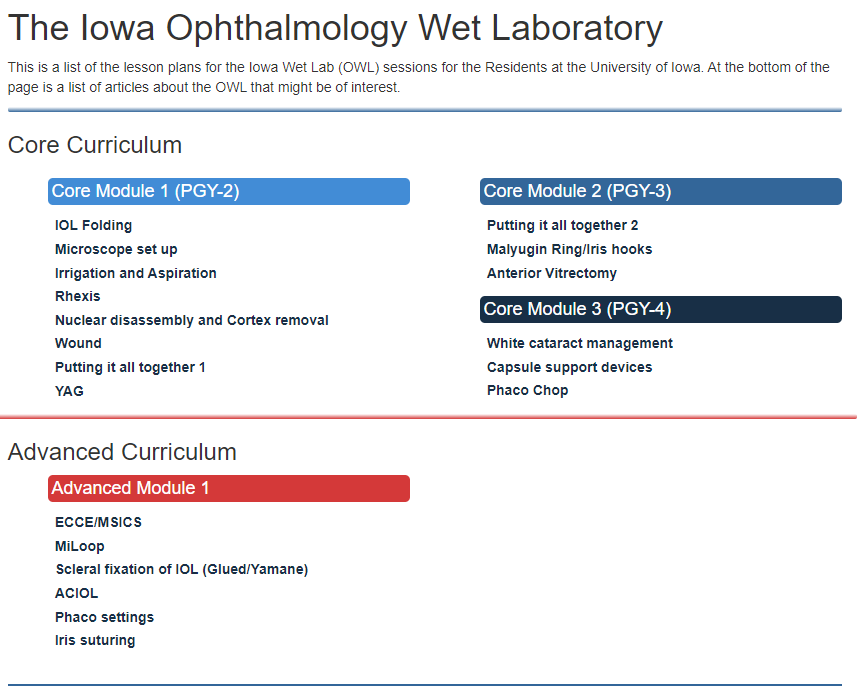VA Wet Lab Session 3: Clear Corneal Wounds and Suturing the Wound
Objectives:
- To make 4 clear corneal wounds
- To fold and insert a single piece acrylic intraocular lenses into the anterior chamber
- To know about the reverse needle pass 1-1-1 suturing technique
- Read this article: Narvaez J, Jones J, Zumwalt M, Mahdavi P. Reversed needle pass clear-corneal or limbal incision suturing technique using the 3-throw (1-1-1) adjustable square knot. J Cataract Refract Surg. 2012 Jun;38(6):929-32. doi: 10.1016/j.jcrs.2012.04.004. PubMed PMID: 22624889 (UI opthalmology residents: Video requires password. The pdf is also password protected, please see Dr. Oetting [link to Video]
- To place 8 radial, 10-0 nylon sutures in clear corneal wounds
- Place some sutures using the traditional technique and some using a reverse needle pass technique
- Know the needle type and suture type used for clear corneal wounds.
- Describe the circumstances in which Prolene and Vicryl sutures are used during cataract surgery.
Resources:
- Henderson BA. Essentials of Cataract Surgery, second edition. Thorofare, NJ: Slack Inc., 2014. (WW 260 E78 2014). isbn 978-1-61711-0672
- Chapter 6, Wound Construction, Pages 51-67
- Chapter 8, Ophthalmic Viscosurgical Devices, Pages 81-85
- Chapter 18, Suturing in Cataract Surgery, Pages 183-192
- Oetting TA, ed. Basic Principles of Ophthalmic Surgery, 2nd ed. San Francisco, American Academy of Ophthalmology, 2011. (WW 39 B311 2011)
- Chapter 5, Pages 57-82
- Chapter 6, Pages 83-92
- Chapter 14, Pages 203-207 (NOTE: Not the whole chapter)
- Access to the wet lab
- Dr. Oetting's Facebook/YouTube Videos:
- Cataract Instrument Tray (EyeRounds Tutorial)
- ALSO SEE Session 4
Review Questions for Oral Exam
last updated: 05/18/2015



